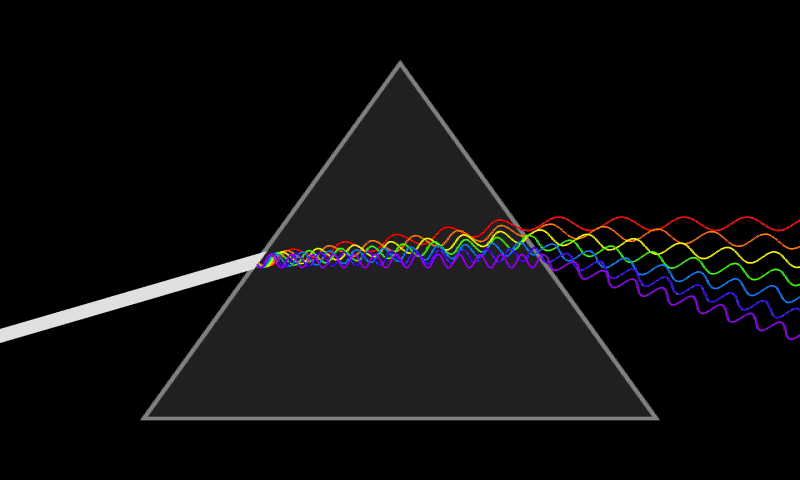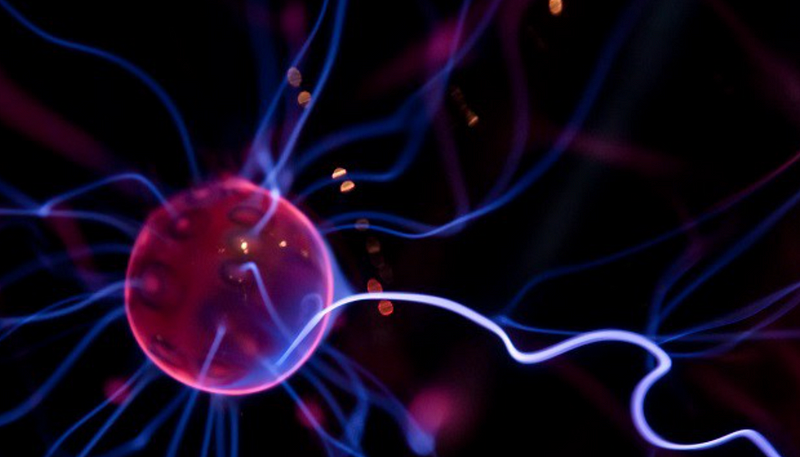# Exploring the Existence of Conscious Beings as Light and Electricity
Written on
Understanding Advanced Beings
In contemporary narratives, we share an abundance of tales about entities that surpass human capabilities. Our representation of what these beings might resemble has evolved significantly, stretching the limits of imagination in visual arts and animations. Often, we envision these advanced life forms as composed entirely of light, electricity, or digital code—each embodying energy, elegance, and potency. These characteristics are not only associated with advanced beings but also resonate with the fundamental essence of nature and consciousness. The concept of life forms made entirely of light or electricity challenges our understanding, posing the question: is there any scientific basis for such conscious entities, or is it merely a figment of fantasy?
This article continues a series exploring consciousness and quantum mechanics. For a deeper understanding, refer to my previous posts:
- Is Consciousness a Quantum Phenomenon?
- Does Quantum Mechanics Explain Self-Awareness and Free Will?
What Constitutes Consciousness?
To explore the possibility of beings made of light, electricity, or computer code, we must first dissect each element.
What is Light?
Light can be perceived as both a wave and a particle. Its wave-like characteristics manifest as vibrations within the electromagnetic field, responsible for all electromagnetic interactions. The particle aspect is represented by photons—quanta that transmit electromagnetic forces. For a conscious entity to exist solely from light, it would necessitate a structural composition where photons engage with each other and their surroundings in a unique manner. However, photons typically do not interact with one another. Special conditions, though rare, may facilitate this interaction.
According to popular culture, a being composed of light might look like this:

What is Electricity?
Electricity refers to the movement of electric charges, typically electrons, from one location to another. This flow is instrumental in transporting energy, making it possible to power our technological devices. Interestingly, energy travels faster than the actual movement of electrons through conductors. Even in situations where electrons oscillate without net displacement, energy can be conveyed through interactions between electric and magnetic fields.
Veritasium has produced a couple of insightful videos that delve into this process:
Unlike photons, electrons interact frequently, making it easier to conceive of their potential to form structures. However, they repel each other, necessitating specific conditions for their coexistence. We will explore how this might be achieved shortly.
In popular media, a being constructed from electricity could appear as follows:

What is Computer Code?
While seemingly less tangible than light or electricity, computer code serves as a universal medium for consciousness. Code embodies information, which permeates all physical systems and objects. Each entity possesses an inherent amount of information known as entropy. Modifying an object's entropy requires energy, just as moving or heating it does. Consequently, this entropy can characterize the behavior of photons, electrons, or the binary data on a hard drive.
PBS Spacetime has created two excellent videos that explain entropy:
A computer processes information, and by this definition, the human brain functions as a computer. If a human brain can achieve consciousness, then a computer composed of transistors and logic gates may also possess the same potential. Moreover, consciousness could potentially transfer between devices like other software applications, rendering its existence independent of any single physical medium.

Defining Life and Consciousness
Now that we understand light, electricity, and computer code, we need to establish what constitutes life and consciousness.
What is Life?
Life is often defined in various ways, but for our purposes, we can adopt a straightforward definition: life is any pattern that maintains itself by consistently utilizing energy. The universe strives for thermal equilibrium, where energy is uniformly distributed. Living organisms must maintain a low entropy state, which necessitates energy consumption. For example, life on Earth derives energy from the Sun, converting it into less useful forms like heat.
To explore this definition further, check out the following videos:
The process through which life arises from nonliving matter is known as abiogenesis. While the specifics remain elusive, it likely results from a fortunate series of physical processes that initiate energy consumption and maintain a low entropy state.
Now that we have a definition of life, we must also define consciousness to determine whether our discussed beings could be considered conscious.
What is Consciousness?
My prior posts have explored various theories surrounding consciousness. Two primary theories warrant examination:
- Global Neuronal Workspace Theory (GNW): This theory posits that consciousness arises when information is processed in a specific manner. To illustrate, consider the brain as a computer. If consciousness is a program running on this computer, it could also function on other computing systems.
- Integrated Information Theory (IIT): This theory suggests that human-like consciousness results from a particular structure interacting with the physical world. While an AI may not experience consciousness identically to humans, it could still possess self-awareness, provided it interacts with its environment adequately.
For our discussion, we will refer to human-like consciousness.
Now, we can define a living, conscious being as any physical system that sustains itself through energy consumption and can experience the world by processing information or interacting with it. We can now explore how conscious life forms might arise from light, electricity, and code.
Potential Beings Made of Light
As previously mentioned, photons typically do not interact. However, under certain conditions, they can. One method involves directing a laser through a supercooled cloud of rubidium atoms. In such scenarios, photons can bind together to form molecule-like entities. These photonic molecules, which consist of two or three photons, exhibit properties distinct from their individual components.
According to Seeker, this interaction occurs because:
> "Photons can’t excite atoms near each other to the same degree. When the first photon strikes a rubidium atom, it excites it, imparting energy. The second photon cannot excite any nearby atoms until the first one has passed, resulting in a situation where the photons must remain close together."
These photonic molecules possess intriguing properties. For instance, they bind more effectively in groups of three than in pairs, hinting at a potential to construct crystals from photons. Such structures could be invaluable for scientific applications.
If we could create discernible structures from light, it might lead to tangible objects composed entirely of light. Although challenging to sustain, it's not impossible. In computing, these photonic molecules could enhance efficiency by eliminating the need to convert light into electricity.
So, based on our definitions, we could theoretically construct a living organism from light. Its body would consist of photonic molecules, consuming energy in the form of incoming light while generating heat during the creation and manipulation of those molecules.
Beings Made of Electron Cooper Pairs
Electrons repel each other, yet they can form quasiparticles called Cooper pairs at sufficiently low temperatures. Cooper pairs experience less thermal agitation than free electrons, enabling them to move through materials with reduced resistance—this phenomenon underlies superconductivity.
The process of Cooper pair formation can be summarized as follows:
> "An electron in a metal generally behaves as a free particle, repelling other electrons due to their negative charge while attracting positive ions in the rigid lattice of the metal."
At low temperatures, conditions can be created for Cooper pairs to form. In a supercooled environment, atomic machinery could consume energy to cool the area, leading to the formation of Cooper pairs. By emitting phonons coherently, the machinery could influence these pairs to interact, mimicking computational processes.
We now have a tangible concept of how conscious beings could be created from light or electricity. What about the potential for consciousness within computer code?
Artificial Intelligence and Simulated Beings
The concepts of self-aware AI and individuals existing in simulated environments are among the most plausible scenarios discussed. These two frameworks allow for the existence of consciousness merely as computer code.
Living, Conscious Artificial Intelligence
Our definition of life can extend to certain computers. Computers possess finite memory and must continually erase stored data, a process that alters entropy and requires energy. This energy consumption qualifies the computer as "alive," especially if it can perform this autonomously.
Consciousness in AI aligns with GNW since it necessitates processing information in specific ways. However, IIT complicates matters, as it requires interaction with the physical world. AIs can achieve this by utilizing various sensors to gather data from their environment.
Simulated Beings
The simulation hypothesis proposes that we might reside in a digitally constructed world. A virtual entity would still require energy to sustain its existence, such as the computational power needed to run its program. The following video explores the energy requirements for human consciousness:
Programmers are actively developing organisms that exist entirely within virtual environments. Such simulated beings would fit our definition of life, as they would process information similarly to humans.
IIT presents a challenge, as it demands a connection to the physical realm. However, it’s feasible for a simulated world to be physical, provided that its parameters closely resemble the laws governing our reality. The following PBS Spacetime videos delve into the potential for simulating the entire universe down to the smallest particles:
A simulated being in such a finely-tuned environment could satisfy the criteria for self-awareness outlined by IIT.
Conclusion
Based on our exploration, it’s conceivable that conscious life forms may exist as constructs of light, electricity, or computer code. This notion invigorates the idea that consciousness is a tangible aspect of reality. As technology advances, including neural networks and teleportation, the possibility of transferring consciousness between forms may become a reality. This leads to a profound ethical question: should we pursue such advancements?
While these concepts remain speculative, I invite you to share your thoughts, questions, and insights to foster a meaningful dialogue on this captivating subject. I will conclude this series by examining whether quantum physics could preserve a simulated universe from being terminated. Until next time!
Works Cited
[Works Cited remain unchanged]